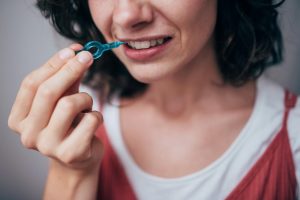 Author: Andrew Turner – Curaden UK Head of Marketing UK & Ireland
Author: Andrew Turner – Curaden UK Head of Marketing UK & Ireland
To restore a missing tooth and improve mastication, speech and aesthetics, a dental implant can be a transformative option, one that enhances a patient’s quality of life. However, a dental implant’s level of artifice can create biological complications within the oral cavity, with peri-implantitis and peri-implant mucositis encompassing two of the most common problems encountered following placement.[i]
Maintaining a healthy oral microbiome requires consistent and effective care from both the patient and the dental practitioner. The presence of a dental implant demands more specific oral health advice and understanding and this can become a challenge. Research indicates that there is a lack of confidence and a knowledge gap among dental professionals for diagnosing and managing the early stages of peri-implant diseases.i This needs amending so that implants have an increased rate of survival and the oral cavity is simultaneously healthier for a happier patient.
Implants under attack
Peri-implantitis is categorised as a pathological condition that occurs in the tissue around dental implants. It is characterised by inflammation in the peri-implant mucosa and progressive loss of supporting bone. Left untreated, the recession of the bone can lead to exposure of the implant threads, increasing the risk of total implant failure. Similar but different to peri-implantitis is the reversible peri-implant mucositis, noted for its inflammation but no bone loss.[ii]
Among implant patients, 45% present with peri-implant mucositis at some point following treatment, whilst 20% present with peri-implantitis.i This can lead to treatment failure for up to 14% of affected patients, with plaque accumulation as the leading risk factor. There are other notable associations that increase the prevalence of peri-implant diseases, including previous diagnosis of periodontitis, an absence of regular peri-implant care, and an inconsistent daily oral hygiene routine.i Elsewhere, smoking and diabetes, the presence of submucosal cement following prosthetic restoration of the implant and the positioning of the implant can also contribute, with the latter potentially limiting toothbrushing access and oral hygiene maintenance.[iii] Further research is needed to confirm occlusal overload, overheating, and bone compression necrosis as risk factors.iii
Mucosal management
Dental practitioners should ensure that at-risk implant patients are well advised on how to better manage their oral health. Long-term implant success relies on taking preventative measures, such as regular dental appointments, behavioural changes (such as diet and smoking) and the management of other systemic diseases like diabetes.i Patients should be advised to look out for inflammation and looseness around the implant, as well as noting any pain, such as during mastication.
Checking patients for peri-implant disease can be a challenge, with 14% of UK GDPs found to not assess implants at all.i Along with radiographs to check bone loss, bleeding on probing (BoP) can check for peri-implant disease but,[iv] whilst it may indicate inflammation of the implant’s surrounding soft tissue, there is controversy as to if the bleeding is instead a result of traumatic wounding.[v] 13% of GDPs reported that they avoid probing around a patient’s implant for fear of complications or the risk of litigation, whilst only 32% of patients received guidance on how to manage bleeding around their implants – both statistics show a large gap in peri-implantitis control.i
Build your defence
Dental practitioners should always enforce peri-implantitis prevention as something that begins in the treatment planning stage and continues through to the surgical placement and beyond. This ensures that the surrounding soft tissue of the implant is healthy, and can be achieved by consistent toothbrushing and interdental cleaning. Improvements in plaque control have been noted following diligent dental care, with interdental brushes proving more effective than dental floss in removing the biofilm around implants.[vi] This makes them a preferred option for patients. An effective oral hygiene routine better protects the lifespan of the implant and decreases BoP for most patients.vi


For a soft interdental brush that offers a comprehensive clean among the interdental spaces, dental practitioners should recommend the CPS range of interdental brushes from Curaprox. Available in five sizes for maximum access in the oral cavity, each brush uses ultrafine bristles for a comfortable yet comprehensive cleaning experience. By removing trapped food debris and harmful bacteria, patients can better protect themselves against oral diseases for a more satisfying treatment experience.
Peri-implant diseases can lead to multiple dental appointments and added stress, as well as an impacted quality of life. But when both practitioner and patient are armed with the knowledge and tools needed to reduce the risk of it occurring, happier and healthier smiles abound.
To arrange a Practice Educational Meeting with your Curaden Development Manager please email us on sales@curaden.co.uk
For more information, please visit www.curaprox.co.uk and www.curaden.co.uk
[i] Perussolo, J. and Nikolaos Donos (2024). Maintenance of peri-implant health in general dental practice. British dental journal, 236(10), pp.781–789. doi:https://doi.org/10.1038/s41415-024-7406-8.
[ii] Heitz-Mayfield, L.J.A. and Salvi, G.E. (2018). Peri-implant mucositis. Journal of Clinical Periodontology, 45, pp.S237–S245. doi:https://doi.org/10.1111/jcpe.12953.
[iii] Herrera, D., Tord Berglundh, Schwarz, F., Chapple, C., Jepsen, S., Sculean, A., Kebschull, M., Papapanou, P.N., Tonetti, M.S. and Sanz, M. (2023). Prevention and treatment of peri‐implant diseases—The EFP S3 level clinical practice guideline. Journal of Clinical Periodontology, 50(26). doi:https://doi.org/10.1111/jcpe.13823.
[iv] www.periodontalcare.sdcep.org.uk. (n.d.). Treatment of peri-implantitis | Prevention and Treatment of Periodontal Diseases. [online] Available at: https://www.periodontalcare.sdcep.org.uk/guidance/dental-implants/treatment-of-peri-implantitis/.
[v] Humphrey, S. (2006). Implant Maintenance. Dental Clinics of North America, 50(3), pp.463–478. doi:https://doi.org/10.1016/j.cden.2006.03.002.
[vi] Almoharib, H., Alaskar, M., Abuthera, E., Alshalhoub, K., Binrokan, F., Nawaf, Alqahtani, S., Hossam, Almadhoon, W. and Almoharib, S. (2024). Efficacy of Three Interdental Cleaning Methods for Peri- Implant Health Maintenance of Single Implant-Supported Crowns: a Randomised Clinical Trial. Oral Health Prev Dent, [online] 22, pp.51–56. doi:https://doi.org/10.3290/j.ohpd.b4854607.




